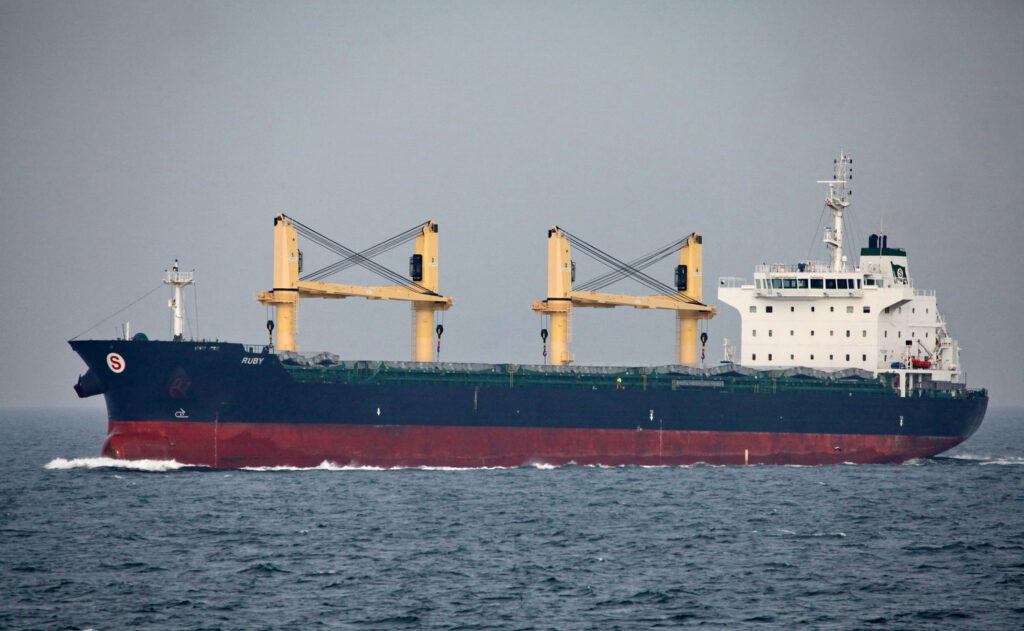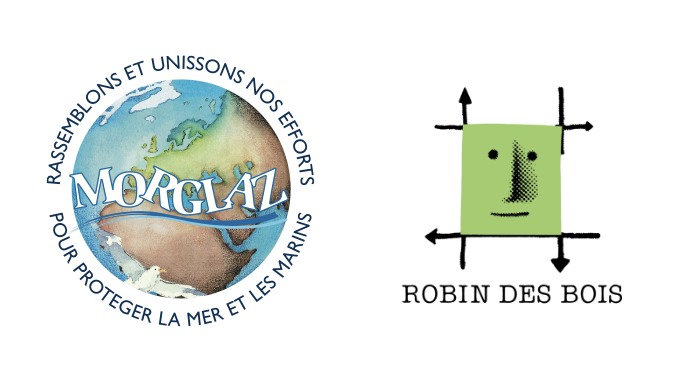Mor Glaz and Robin des Bois NGOs’ common press release
Landerneau, Finistère, and Paris, October 4, 2024
As if there weren’t enough humanitarian and environmental disasters going on these days, the Ruby cargo ship is now being portrayed as a floating Hiroshima or Beirut, a particularly explosive and anxiogenic cocktail.
The 2,750 tons of near-pure ammonium nitrate left for 6 or 7 years next to fireworks and tires in the Beirut hangar were intended for the manufacture of mining explosives in Mozambique. The ammonium nitrate from Beirut was not a fertilizer. The Ruby’s cargo consists of nitrogen fertilizers containing ammonium nitrate. The Ruby loaded about 20,000 tons of it in the port of Kandalaksha, in the White Sea in the Arctic, east of Murmansk. Until then, the main export port was St. Petersburg in the Baltic Sea, but Russia, fearing drone attacks from Ukraine, recently removed St. Petersburg from the list of ports authorized to export ammonium nitrate fertilizers. Kandalaksha is one of the substitute ports.
The final destination of the Ruby was not the Canary Islands, as press articles repeat endlessly. The Canary Islands are not known for their intensive cereal production, and a delivery of 20,000 tons of nitrogen fertilizers manufactured in Russia would appear all the more incongruous since in 2023 Spain purchased only 4,924 tons of fertilizers containing ammonium nitrate from Russia. In fact, the port of Las Palmas is used by cargo ship operators and their masters to stock up on bunker fuel, food, and other necessities. Logically, the final destination of the Ruby after reaching Las Palmas was rather Brazil, Russia’s leading customer for ammonium nitrate fertilizers (1,126,580 tons imported in 2023).
Having left Kandalaksha on August 22, the Ruby has been at anchor since September 25 in a waiting area off the Thames, outside English territorial waters. After the damage the Ruby suffered in the White Sea or during Storm Lilian off Norway, she is obviously no longer able to cross the Atlantic as if nothing had happened. As a precaution, she is under permanent tug assistance. To date, there is no sign of thermal degradation of the Ruby‘s cargo, unlike what has already happened on board ships in the North Sea and the Bay of Biscay, for example the Purple Beach (2015)* and M/V Cheshire (2017)**.
The Mor Glaz and Robin des Bois NGOs based in Brittany and Paris are calling for a real cooperation between the producer of the cargo in Russia, the shipowner based in the United Arab Emirates, Great Britain and the European states to be put in place quickly and in serenity, based on reliable information, to find the optimal solution guaranteeing the crew of 19 sailors, the majority of whom are Syrian, the Ruby and the environment a favourable outcome, possibly involving the unloading of the cargo at dock, a thorough assessment of the ship’s damage and her repair.
From October 15 to 17, 2024, the “Sea Tech Week” dedicated to maritime safety will be held in Brest. This event should be an opportunity to address the major topic of the maritime transport of hazardous materials. More and more bulk carriers, general cargo ships, container ships, oil tankers and gas carriers are subject to damage, collisions or fires on the world ocean that endanger sailors, the environment and the populations of port cities. There are thousands of so-called “floating bombs” on the world ocean and dozens every day off the Atlantic coast.
 The Ruby in the Skagerrak Strait, January 23, 2021 © Bostmanmat
The Ruby in the Skagerrak Strait, January 23, 2021 © Bostmanmat
Ruby Enterprise Ltd registered in Malta is the sole owner of the Ruby. Serenity Ship Management DMCC claims a fleet of 10 vessels of which it is both technical and commercial operator, ISM manager and beneficial owner.The Ruby ex-Lady Amna is a great traveller. Since the beginning of her career, she has been inspected 40 times in ports around the world, from the China Sea to the North Sea, via the Atlantic, the Mediterranean, the Black Sea and the Red Sea for a total of 46 deficiencies.
She has notably been inspected in China (Tianjin, Zhanjiang, Shantou), Viet Nam, Indonesia (Gresik, Sungai Pakning), Malaysia (Bintulu), India (Mumbai), Senegal (Dakar), Jordan (Aqaba), Morocco (Agadir), Türkiye (Iskenderun), Russia (Novorossiysk), Split (Croatia), Taranto (Italy), Klaipeda (Lithuania), Burgas (Bulgaria) and finally in Tromso (Norway) at the beginning of September 2024 after her departure from Kandalaksha. Norwegian inspectors found 6 deficiencies on the Ruby, 3 of which justified her detention: one or more cracks in the hull, shortcomings in crew certification and in ISM safety procedures. No mention was made in this report of damage to the propeller and rudder. After her “release” by Norway, the Ruby was to undergo repairs in the port of Klaipeda in Lithuania, but Lithuania ultimately refused access as long as she was loaded. According to the British coastguard, the Ruby is seaworthy and is waiting for favourable weather conditions to refuel.
www.morglaz.org
www.robindesbois.org
* see “Shipbreaking” #47 p. 90 to 93 “The END. Purple Beach: the ammonium nitrate obsession” (pdf – 17 Mo)
** see “Shipbreaking” #52 p. 75 “Cheshire“ (pdf – 13,1 Mo)
 Imprimer cet article
Imprimer cet article









